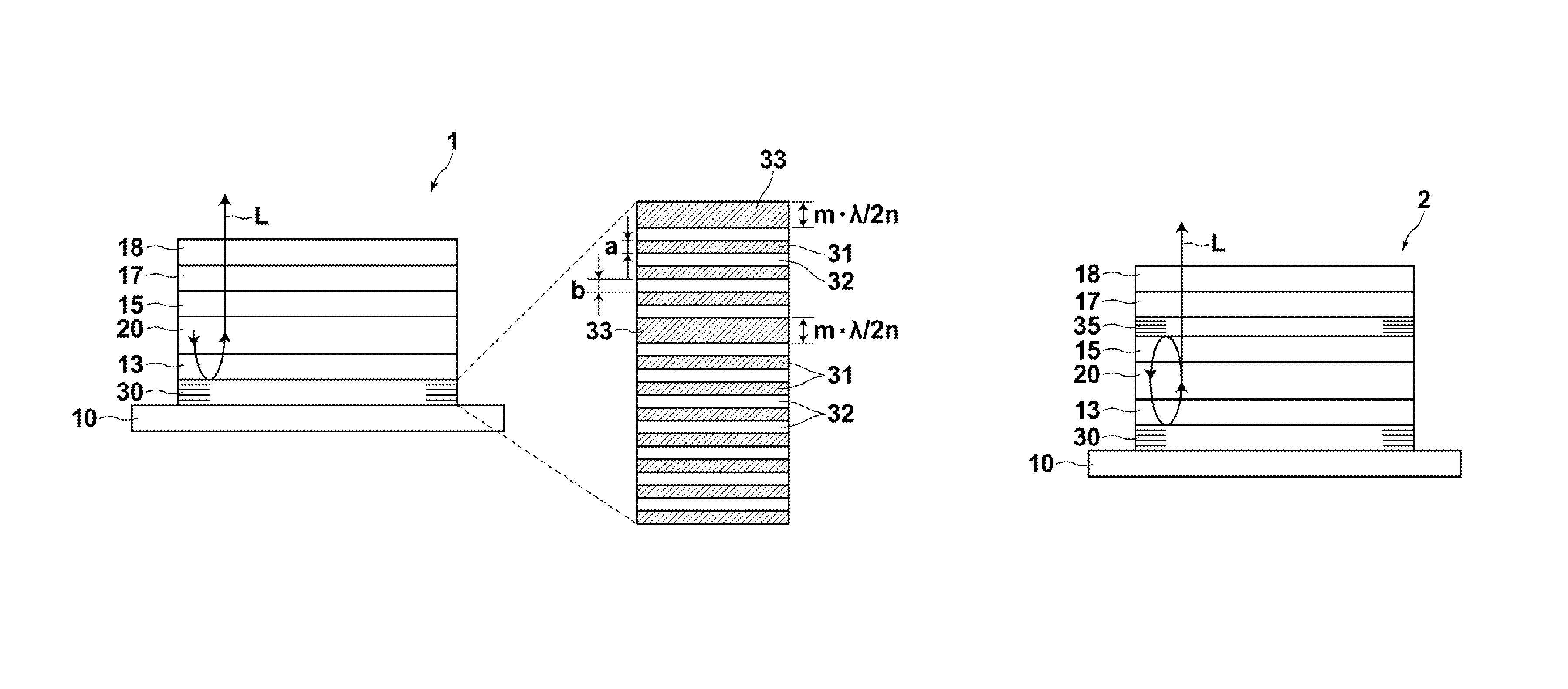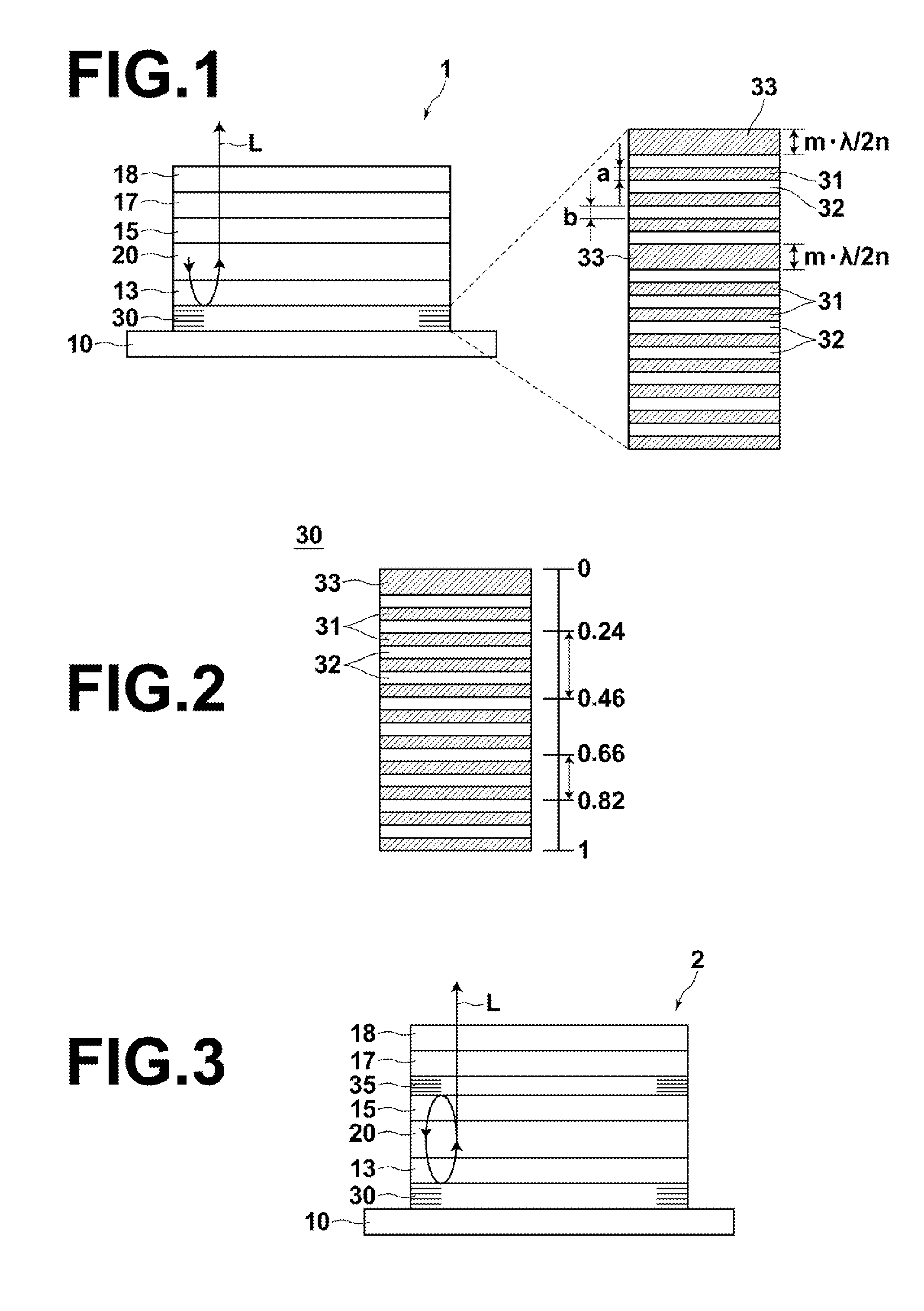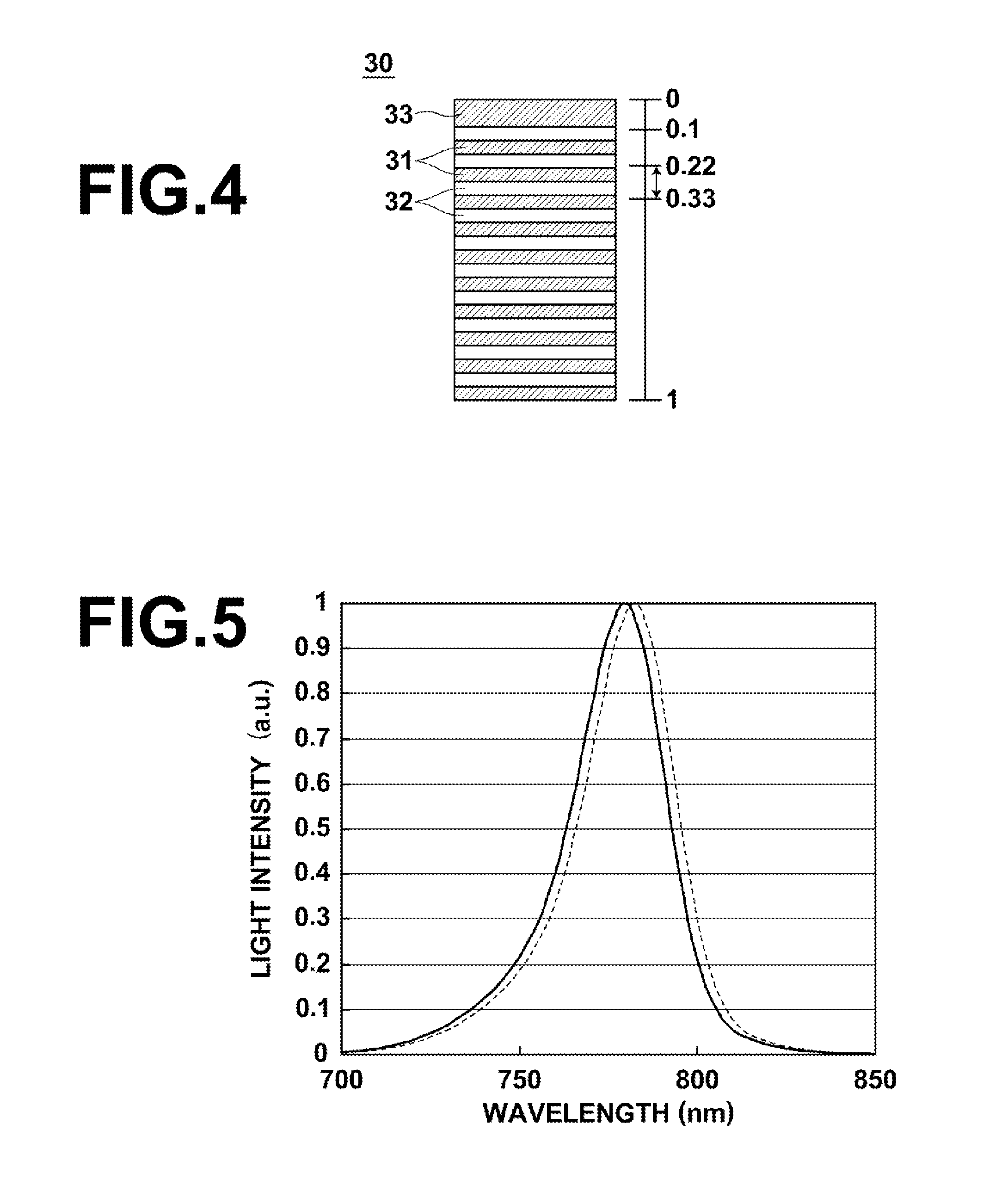Semiconductor light emitting element
a technology of semiconductor light emitting element and semiconductor, which is applied in the direction of semiconductor devices, basic electric elements, electrical appliances, etc., can solve the problems of film thickness fluctuation and difficulty in uniform formation of films, and achieve the effects of reducing production costs, preventing complexity during production, and simplifying production steps
- Summary
- Abstract
- Description
- Claims
- Application Information
AI Technical Summary
Benefits of technology
Problems solved by technology
Method used
Image
Examples
example 1
[0114]Example 1 is an LED having the layer structure of Simulation 2 illustrated in FIG. 11, in which the thicknesses t of the No. 1 and No. 7 low refractive index layers are λ / 2n. The resonator spectrum of this element obtained by simulations is illustrated in FIG. 17. In addition, the natural light emitting spectrum, the reflectance of the lower DBR layer with respect to the peak light emission wavelength, and the reflectance of the upper AR layer with respect to the peak light emission wavelength are illustrated in FIG. 18.
example 2
[0115]Example 2 is an LED having the layer structure illustrated in FIG. 19. In the present element, the thicknesses of the high refractive index layers 32 under the No. 1 and No. 7 low refractive index layers within the lower DBR layer are changed to λ / 2n (=116 nm) to become phase changing layers. The resonator spectrum of the present element obtained by simulations is illustrated in FIG. 20.
example 3
[0116]Example 3 is an LED having the layer structure of Simulation 5 illustrated in FIG. 15, in which the thickness of the layer 34 inserted into the No. 7 low refractive index layer is 10 nm.
PUM
 Login to View More
Login to View More Abstract
Description
Claims
Application Information
 Login to View More
Login to View More - R&D
- Intellectual Property
- Life Sciences
- Materials
- Tech Scout
- Unparalleled Data Quality
- Higher Quality Content
- 60% Fewer Hallucinations
Browse by: Latest US Patents, China's latest patents, Technical Efficacy Thesaurus, Application Domain, Technology Topic, Popular Technical Reports.
© 2025 PatSnap. All rights reserved.Legal|Privacy policy|Modern Slavery Act Transparency Statement|Sitemap|About US| Contact US: help@patsnap.com



